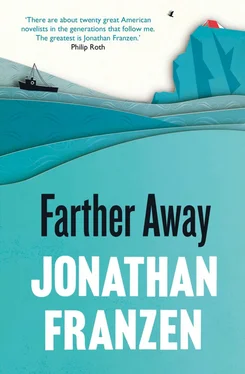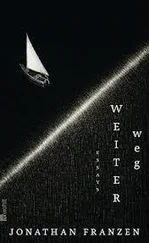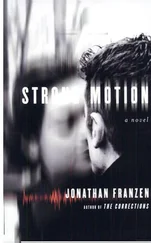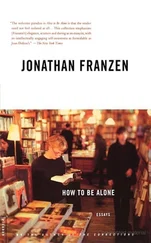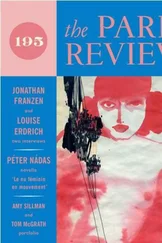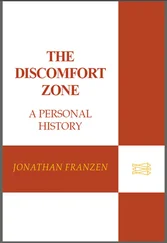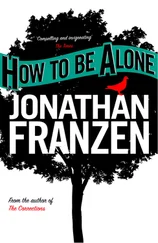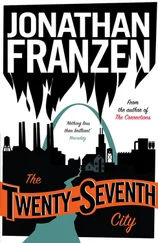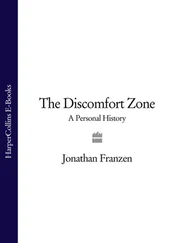The first of these was to gather and purify some drinking water. Carrying a filtration pump and a canvas waterskin, I followed what I thought was the path to the pool, which I knew wasn’t more than two hundred feet from the refugio, and I immediately got lost in the fog. When I finally located the pool, after trying several paths, the tube on my pump cracked. I’d bought the pump twenty years earlier, thinking it would come in handy if I was ever alone in the wilderness, and its plastic had since gone brittle. I filled up the skin with somewhat turbid water and, despite my resolution, entered the refugio and poured the water into a large cooking pot, along with some iodine tablets. This simple task had somehow taken me an hour.
Since I was in the refugio anyway, I changed out of my clothes, which had been soaked by the climb through dew and fog, and tried to dry the inside of my boots with the surfeit of toilet paper I’d brought. I discovered that the GPS unit, the one gadget that I didn’t have spare batteries for, had been switched on and draining power all day, which triggered an anxiety that I assuaged by wiping all the mud and water off the refugio’s floor with further wads of toilet paper. Finally, I ventured out onto a rocky promontory and scouted for a campsite beyond the refugio’s penumbra of mule droppings. A hawk dived right over my head; a cinclodes called pertly from a boulder. After much walking and weighing of pros and cons, I settled on a hollow that afforded some protection from the wind and no view of the refugio, and there I picnicked on cheese and salami.
I’d been alone for four hours. I put up my tent, lashing the frame to boulders and weighing down the stakes with the heaviest rocks I could carry, and made some coffee on my little butane stove. Returning to the refugio, I worked on my footwear-drying project, pausing every few minutes to open windows and shoo out the flies that kept finding their way inside. I seemed to be no more able to wean myself from the refugio’s conveniences than from the modern distractions that I was supposedly here to flee. I fetched another skin of water and used the big pot and the propane stove to heat some bathwater, and it was simply much more pleasant, after my bath, to go back inside and dry off with the microfiber towel and get dressed than to do this in the dirt and the fog. Since I was already so compromised, I went ahead and carried one of the foam mattresses down the promontory and put it in my tent. “But that’s it,” I said to myself, aloud. “That’s the end of it.”
Except for the hum of flies and the occasional call of a cinclodes, the silence at my campsite was absolute. Sometimes the fog lifted a little and I could see rocky hillsides and wet, fern-filled valleys before the ceiling lowered again. I took out my notebook and jotted down what I’d done in the past seven hours: got water, had lunch, put up tent, took bath. But when I thought about writing confessionally, in an “I” voice, I found that I was too self-conscious. Apparently, in the past thirty-five years, I’d become so accustomed to narrativizing myself, to experiencing my life as a story, that I could now use journals only for problem solving and self-investigation. Even at fifteen, in Idaho, I hadn’t written from within my despair but only after I was safely over it, and now, all the more so, the stories that mattered to me were the ones told—selected, clarified—in retrospect.
My plan for the next day was to try to see a rayadito. Simply knowing that the bird was on the island made the island interesting to me. When I go looking for new bird species, I’m searching for a mostly lost authenticity, for the remnants of a world now largely overrun by human beings but still beautifully indifferent to us; to glimpse a rare bird somehow persisting in its life of breeding and feeding is an enduringly transcendent delight. The next morning, I decided, I would get up at dawn and devote, if necessary, the entire day to finding my way to Los Inocentes and getting back. Cheered by the prospect of this not unchallenging quest, I made myself a bowl of chili, and then, although the daylight hadn’t faded yet, I zipped myself inside my tent. On the very comfortable mattress, in a sleeping bag I’d owned since high school, and with a headlamp on my forehead, I settled down to read Robinson Crusoe. For the first time all day, I felt happy.
One of Robinson Crusoe’s biggest early fans was Jean-Jacques Rousseau, who, in Émile, proposed that it be the primary text for the education of children. Rousseau, in the fine tradition of French bowdlerization, didn’t have in mind the entire text, just the long central section, in which Robinson relates his survival for a quarter century on a desert island. Few readers would dispute that this is the novel’s most compelling section, next to which the adventures of Robinson before and after (being enslaved by a Turkish pirate, fending off the attacks of giant wolves) seem lusterless and rote. Part of the survival story’s appeal is the specificity of Robinson’s recounting of it: the “three … hats, one cap, and two shoes that were not fellows” that are all that remain of his drowned shipmates, the catalogue of useful gear that he salvages from the wrecked ship, the intricacies of stalking the feral goats that populate the island, the nuts and bolts of reinventing the homely arts of making furniture, boats, pottery, and bread. But what really animates these adventureless adventures, and makes them surprisingly suspenseful, is their accessibility to the imagination of the ordinary reader. I have no idea what I would do if I were enslaved by a Turk or menaced by wolves; I might very well be too scared to do what Robinson does. But to read about his practical solutions to the problems of hunger and exposure and illness and solitude is to be invited into the narrative, to imagine what I would do if I were similarly stranded, and to measure my own stamina and resourcefulness and industry against his. (I’m sure my father was doing this, too.) Until the larger world impinges on the island’s isolation, in the form of marauding cannibals, there’s just the two of us, Robinson and his reader, and it’s very cozy. In a more action-packed narrative, the pages detailing Robinson’s everyday tasks and emotions would be what the critic Franco Moretti wryly calls “filler.” But, as Moretti notes, the dramatic expansion of this kind of “filler” was precisely Defoe’s great innovation; such stories of the quotidian became a fixture of realist fiction, in Austen and Flaubert as in Updike and Carver.
Framing and to some extent interpenetrating Defoe’s “filler” are elements of the other major forms of prose narrative that preceded it: ancient Hellenistic novels, which included tales of shipwrecks and enslavement; Catholic and Protestant spiritual autobiographies; medieval and Renaissance romances; and Spanish picaresques. Defoe’s novel follows also in the tradition of narratives libelously based, or purporting to be based, on the lives of actual public personages; in Crusoe’s case, the model was Alexander Selkirk. It has even been argued that Defoe intended the novel as a piece of utopianist propaganda, extolling the religious freedoms and economic opportunities of England’s New World colonies. The heterogeny of Robinson Crusoe illuminates the difficulty, maybe even the absurdity, of talking about the “rise of the novel” and of identifying Defoe’s work as the first individual of the species. Don Quixote, after all, was published more than a century earlier and is clearly a novel. And why not call the romances novels, too, since they were widely published and read in the seventeenth century and since, indeed, most European languages make no distinction between romance and novel? Early English novelists did often specifically stress that their own work was not “mere romance”; but, then, so had many of the romance writers themselves. And yet, by the early nineteenth century, when leading specimens of the form were first collected in authoritative sets by Walter Scott and others, the English not only had a very clear idea of what they meant by “novels” but were exporting large numbers of them, in translation, to other countries. A genre now definitely existed where none had before. So what exactly is a novel, and why did the genre appear when it did?
Читать дальше
